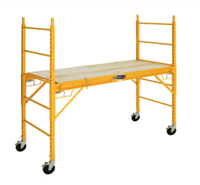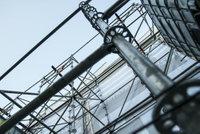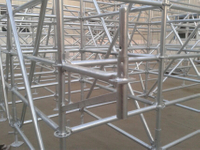Content Menu
● Introduction to Tube Lock Scaffolding
● Components of Tube Lock Scaffolding
● Advantages of Tube Lock Scaffolding
● Applications of Tube Lock Scaffolding
● Comparison with Other Scaffolding Systems
● Safety Considerations
● Maintenance and Storage
● Tips for Maintenance:
● Environmental Considerations
● Future Developments
● Conclusion
● FAQ
>> 1. What are the primary components of tube lock scaffolding?
>> 2. How does the twist-lock mechanism work?
>> 3. What are the advantages of using tube lock scaffolding?
>> 4. How does tube lock scaffolding compare to cuplock scaffolding?
>> 5. What safety precautions should be taken when using tube lock scaffolding?
● Citations:
Tube lock scaffolding systems, also known as twist lock scaffolding, are a type of scaffolding that uses a unique locking mechanism to secure the tubes together. This system is widely used in construction and industrial settings due to its ease of assembly, flexibility, and safety features. In this article, we will delve into the key features of tube lock scaffolding systems, exploring their components, advantages, and applications.
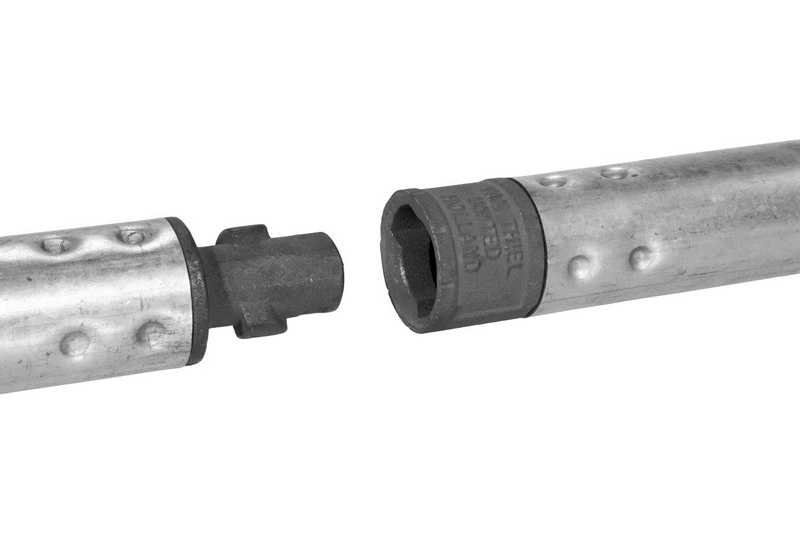
Introduction to Tube Lock Scaffolding
Tube lock scaffolding is characterized by its use of steel tubes with male and female fittings at each end. These fittings can be locked together by twisting the tubes in a specific direction, creating a secure and stable structure. This mechanism allows for quick assembly and disassembly, making it ideal for projects where scaffolding needs to be frequently moved or adjusted.
Components of Tube Lock Scaffolding
The primary components of tube lock scaffolding include:
- Tubes: These are the main structural elements, typically made from steel with a diameter of 48.3 mm. Tubes come in various lengths and have male and female fittings at each end.
- Fittings: The male and female fittings are designed to twist-lock into place, securing the tubes together.
- Base Plates: These are used to distribute the weight of the scaffolding evenly and prevent it from tipping over.
- Boards: Placed across the tubes to create platforms for workers.
- Braces: Used to add stability and prevent swaying.
Advantages of Tube Lock Scaffolding
Tube lock scaffolding offers several advantages over other types of scaffolding systems:
1. Ease of Assembly and Disassembly: The twist-lock mechanism allows for quick setup and teardown, saving time on construction sites.
2. Flexibility: The system can be easily adapted to different project requirements, making it versatile for various applications.
3. Safety: The secure locking mechanism ensures a stable structure, reducing the risk of accidents.
Applications of Tube Lock Scaffolding
Tube lock scaffolding is used in a variety of construction and industrial projects, including:
- Building Maintenance: Ideal for accessing high-rise buildings for repairs and maintenance.
- Construction Projects: Useful for creating temporary access platforms during building construction.
- Event Setup: Often used for setting up stages and seating areas for events.
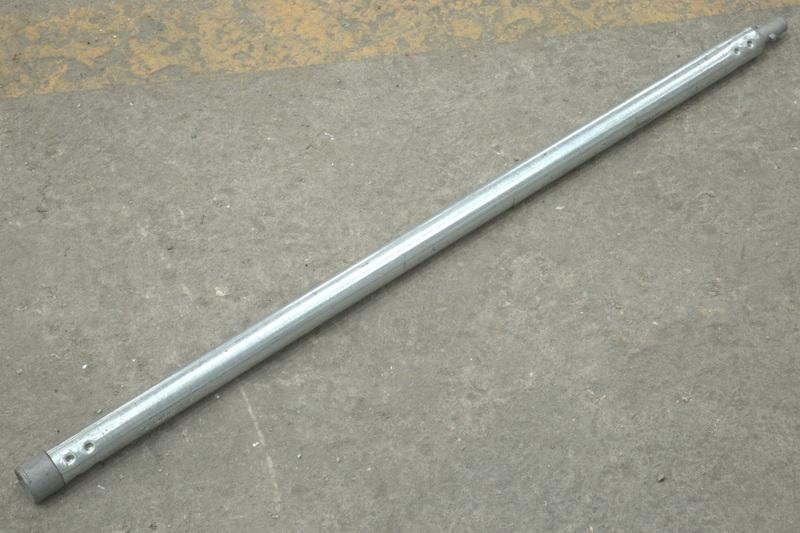
Comparison with Other Scaffolding Systems
Tube lock scaffolding can be compared to other popular systems like cuplock and tube and clamp scaffolding:
| Scaffolding Type | Key Features | Advantages |
| Tube Lock | Twist-lock mechanism, easy assembly | Fast setup, flexible |
| Cuplock | Cup and blade locking system | Fast erection, durable |
| Tube and Clamp | Uses clamps to connect tubes | Highly customizable, easy to set up |
Safety Considerations
Safety is paramount when using tube lock scaffolding. Ensuring that all components are properly secured and that the structure is regularly inspected can help prevent accidents. Workers should also be trained in the safe assembly and disassembly of the scaffolding.
Maintenance and Storage
Proper maintenance and storage of tube lock scaffolding components are crucial to extend their lifespan and ensure safety. Regular cleaning and inspection can help identify any damage or wear, allowing for timely repairs or replacements.
Tips for Maintenance:
- Regular Inspection: Check for any signs of damage or corrosion.
- Cleaning: Use appropriate cleaning solutions to remove dirt and debris.
- Storage: Store components in a dry, secure location to prevent damage.
Environmental Considerations
Tube lock scaffolding systems are generally environmentally friendly as they are reusable and can be easily transported, reducing waste and the need for new materials. However, it's important to ensure that all materials are disposed of properly at the end of their life cycle.
Future Developments
As technology advances, there is potential for further innovations in tube lock scaffolding systems. This could include the integration of new materials or designs that enhance safety and efficiency.
Conclusion
Tube lock scaffolding systems offer a reliable and efficient solution for construction and industrial projects. Their ease of assembly, flexibility, and safety features make them a preferred choice among contractors. By understanding the key features and applications of tube lock scaffolding, professionals can better utilize these systems to enhance project efficiency and safety.
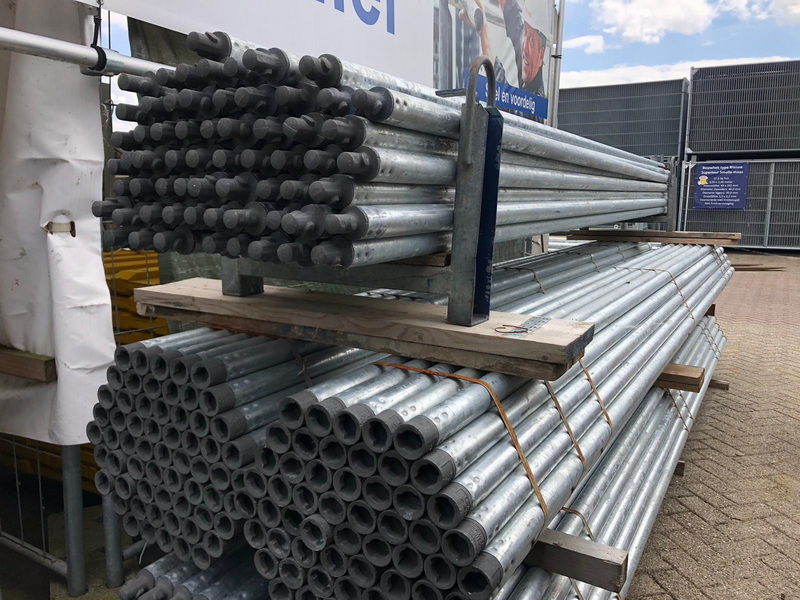
FAQ
1. What are the primary components of tube lock scaffolding?
Tube lock scaffolding primarily consists of steel tubes with male and female fittings, base plates, boards, and braces.
2. How does the twist-lock mechanism work?
The twist-lock mechanism involves twisting the male and female fittings together to secure the tubes in place.
3. What are the advantages of using tube lock scaffolding?
The advantages include ease of assembly, flexibility, and safety due to the secure locking mechanism.
4. How does tube lock scaffolding compare to cuplock scaffolding?
Tube lock scaffolding is known for its ease of assembly, while cuplock scaffolding is noted for its durability and fast erection speed.
5. What safety precautions should be taken when using tube lock scaffolding?
Ensure all components are properly secured, and conduct regular safety inspections to prevent accidents.
Citations:
[1] https://www.universalscaffold.com/scaffolding-for-sale/system-scaffolding/
[2] https://www.youtube.com/watch?v=wBKilb9ALEY
[3] https://patents.google.com/patent/CN218714919U/en
[4] https://www.grinsulating.com/top-benefits-tube-and-clamp-scaffold/
[5] https://www.youtube.com/watch?v=iUqDWjr6uok
[6] https://patents.google.com/patent/WO2019144468A1/zh
[7] https://www.wm-scaffold.com/scaffolding-system/
[8] https://www.youtube.com/watch?v=ZM6Tlh_NAnQ
[9] https://scaffoldtype.com/tubular-scaffolding/













